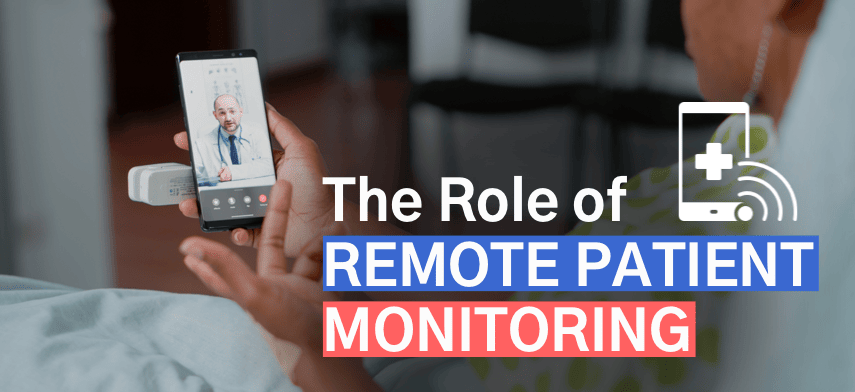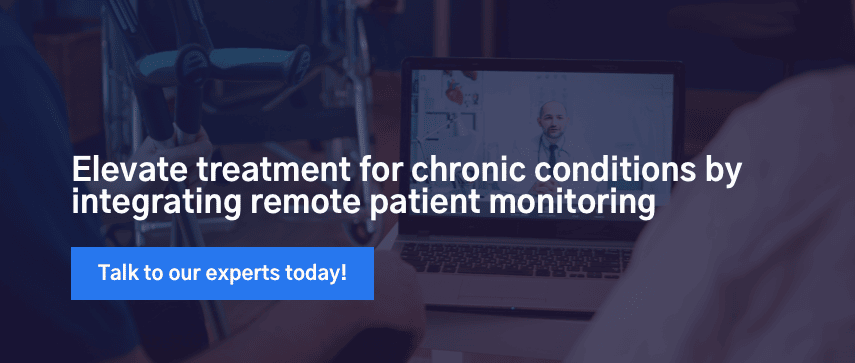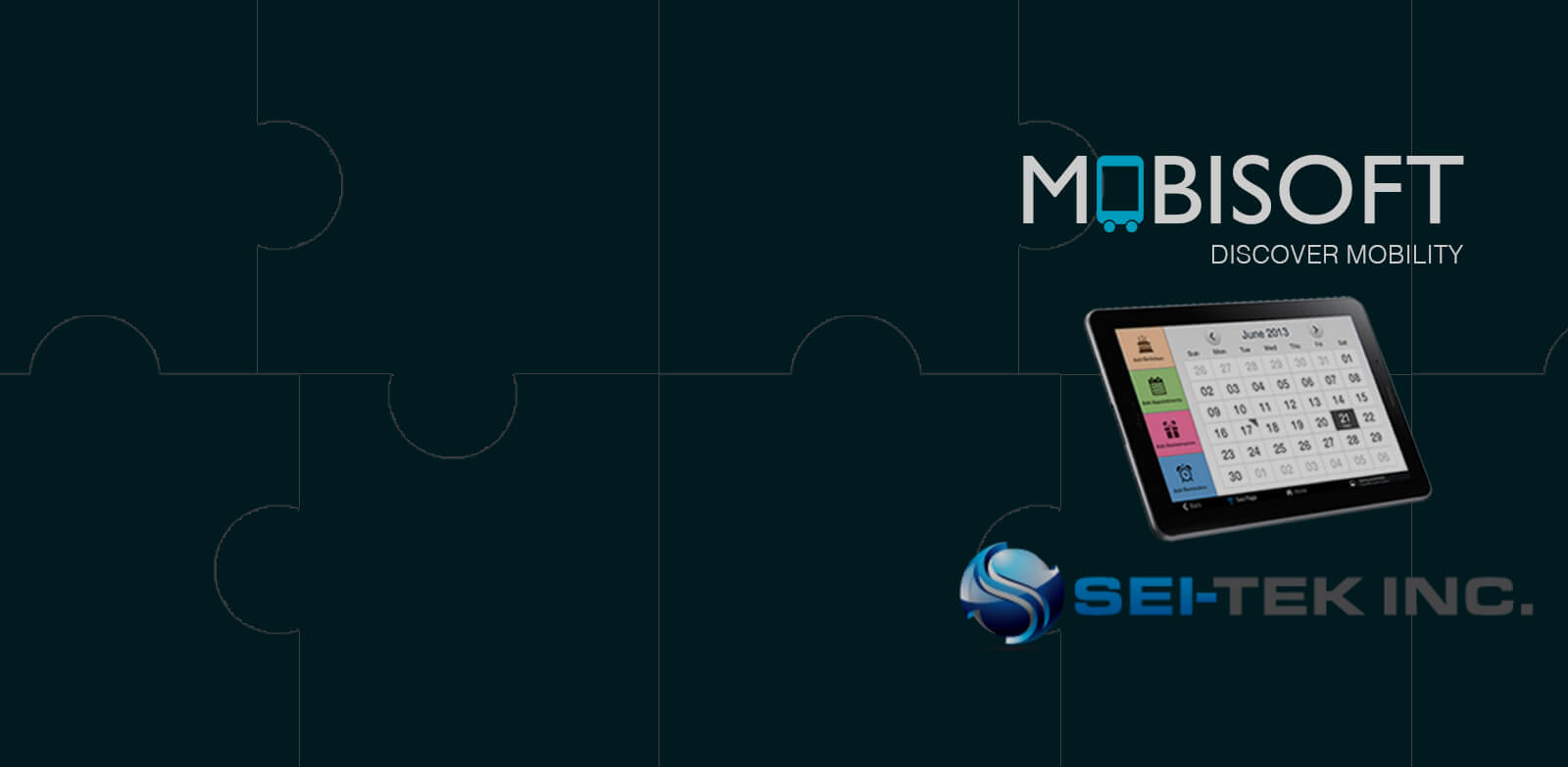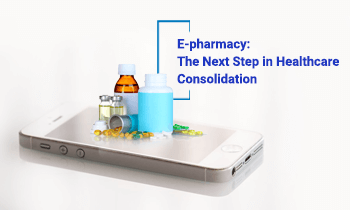Striving to understand the transformative evolution of healthcare technologies with strong support for our national health systems, it is necessary to understand the role of remote patient monitoring. Remote patient monitoring plays a crucial role in chronic disease management and provides patients with the opportunity to improve their health outcomes.

Chronic illnesses can be best described as health concerns that continue over a long period with necessary medical attention at regular intervals. This management of chronic diseases can impede everyday activities for patients by improving patient health outcomes.
The estimated cases of chronic disease in the US is approximately 50% with healthcare costs consuming 80% of their treatment. Many healthcare organizations and facilities still depend on traditional chronic care models that are characterized by in-person care encounters. These are inconvenient, expensive, and become insufficient frequently. So what can healthcare systems do to provide robust, cost-efficient, and on-time care?
Integrating Remote Patient Monitoring
Integrated healthcare systems are starting to reconfigure their care delivery models to provide patients with proactive care for chronic disease management. The key element of integrating remote patient monitoring services allows patients to share information in a non-clinical and homely setting to receive the required care assessments and suggestions between their visits.
Healthcare technologies like remote patient monitoring (RPM) are strongly believed to be the future of integrated healthcare systems. In the previous years, health systems have observed that consumer expectations come to them and it helps in delivering care more efficiently than clinics and hospitals. With the COVID-19 pandemic, connected healthcare technologies have become smarter and more convenient with care offerings due to the integration of revised care models empowered by digital healthcare services.
The most advanced and integrated health systems recognize the converging healthcare trends and move rapidly to distinguish themselves with more care-at-home options. The early remote patient monitoring indicators include the essential capabilities of healthcare to support the Triple Aim:
- Aiming to improve care experience with convenient care-at-home models.
- Supporting better health outcomes through appropriate data collection and proactive information.
- Preventing any avoidable healthcare emergencies and associated expenses.
6 Remote Patient Monitoring Roles Improving Chronic Care Management
Transformative and connected healthcare technologies have the potential in elevating the advanced goals of improved healthcare efficiency, equity, and quality. It is crucial to understand the transformation, early experiences after adoption, and supportive business models that can help remote patient monitoring to excel after deployment.
Let’s have a look at the 6 different roles remote patient monitoring plays in improving chronic disease management.
1. The early warning detection system
Chronic illnesses require on-time or early detection of patient deterioration to begin early procedures of intervention before preventable or unplanned solutions are needed. Real-time constant remote patient monitoring can help healthcare providers to be warned about a patient’s health conditions and trigger early warnings for immediate interventions. To improve patient adherence, healthcare instruments are capable of self-activation protocols that help patients to stay informed and providers know the necessary steps to be taken.
Some point of care devices detects normal data and threshold, in which, providers and clinicians need to be consulted. These integrated healthcare systems offer alerts when patients show early signs of deterioration, allowing caregivers and patients to communicate with one another and plan treatment strategies accordingly.
2. Care integrator
Remote patient monitoring technologies provide integrative solutions for care through data exchange and communication platforms across multiple co-morbidities, providers, and complex disease phases. Connected healthcare devices and EHR systems, connect the complex web of providers, who may not be able to communicate and work together and improve the overall health of a patient suffering from chronic illnesses.
3. Progress tracking services
For encouraging changes in patient behavior and self-care and monitoring chronic conditions, motivational techniques such as progress tracking services are essential. With remote patient monitoring devices, providers can promote self-care and self-monitoring combined with evidence-based health treatment for patients. Even with the data being presented as a number like summary graphs or vital signs. RPM allows patients to receive daily information, support, help, and recommendations that can help them manage their chronic conditions and improve the term of their health outcomes.
4. Building confidence
Patients enrolled in remote patient monitoring programs have often been observed to have more trust and satisfaction due to the nature of staying connected with their providers. RPM has provided a pathway to boost healthcare productivity and improved patient responsibilities to care for themselves. It has also improved chronic disease management to prevent any acute further deterioration of chronic illnesses.
Using remote patient monitoring devices, integrated or standalone at the point of care can help people to monitor themselves and collect information like blood sugar, blood pressure, glucose levels, heart rates, and more. This way, RPM builds confidence and provides efficacy to patients with chronic conditions, and improves their health outcomes.
5. Builds capacity for patients and providers
Having medical emergencies can cause a significant strain on healthcare facilities including the overcrowding of emergency departments. Remote patient monitoring helps providers to regularise and reduce hospital readmissions and medical emergencies by taking immediate prevention-based approaches. Real-time and prevention healthcare tracking would aid in healthcare management and creates an environment for reduced hospital readmissions and lead to lowering costs and workforce changes to adapt to the new protocols.
6. Boosts productivity
Health systems have a medical emergency strain with excessively long hours for clinical personnel. Remote patient monitoring helps providers in reducing medical emergencies by utilizing Artificial Intelligence and Machine Learning engines and other integrated healthcare solutions and technologies for facilitating remote patient monitoring and care delivery services. Remote patient monitoring boosts provider productivity and focuses on other healthcare emergencies by improving care delivery performance and eliminating duplicate services.

Key Takeaway
To conclude, remote patient monitoring can offer opportunities to integrate advanced technology and become more mainstream in the healthcare industry. RPM programs are distinguished in various health-related areas and for patients with chronic disease management requirements. It also helps in lowering healthcare overhead costs, reducing hospital readmissions, and avoiding any acute care episodes through early warnings.
In the meantime, RPM can assist to improve patient safety and lessening contagious exposure in hospital settings. The key purpose of remote patient monitoring as a part of healthcare technologies is to make sure that chronic condition patients going through long-term therapy can receive seamless economical care and even get access to clinics in rural or underserved areas. The widespread adoption of RPM will continue to improve safety, independence, and the holistic health of people.

Author's Bio

Shailendra Sinhasane (Shail) is the co-founder and CEO of Mobisoft Infotech. He has been focused on cloud solutions, mobile strategy, cross-platform development, IoT innovations and advising healthcare startups in building scalable products.


